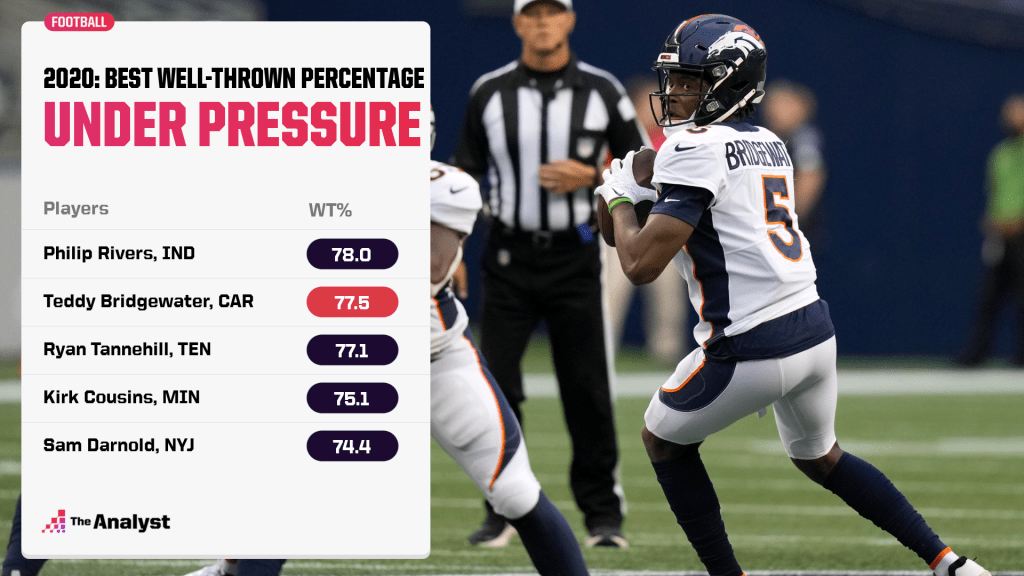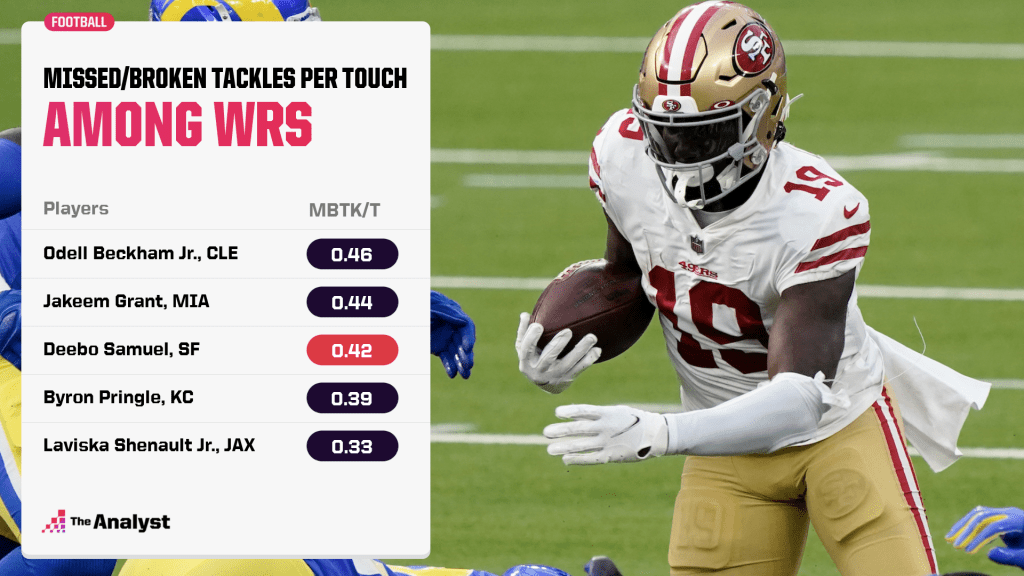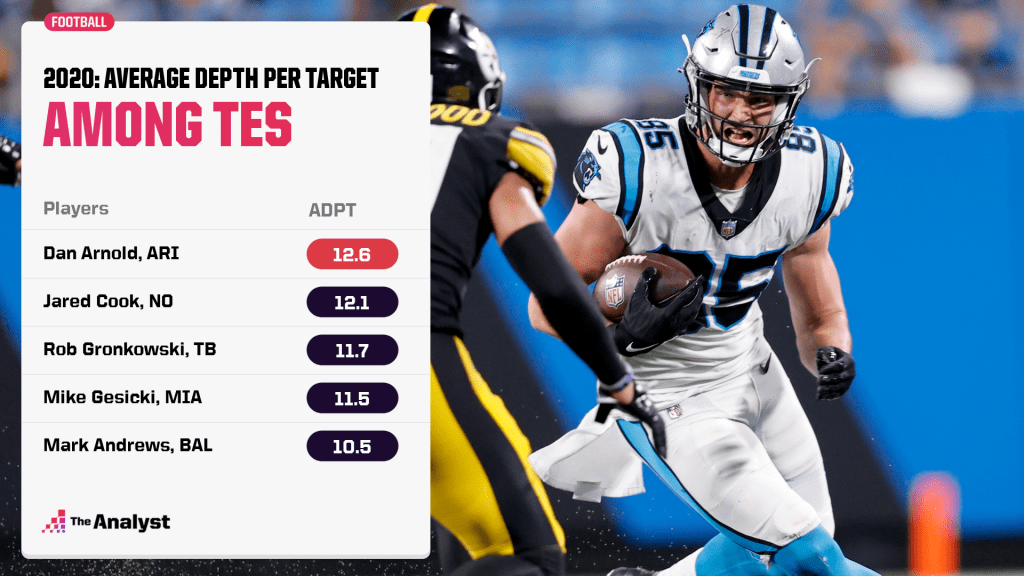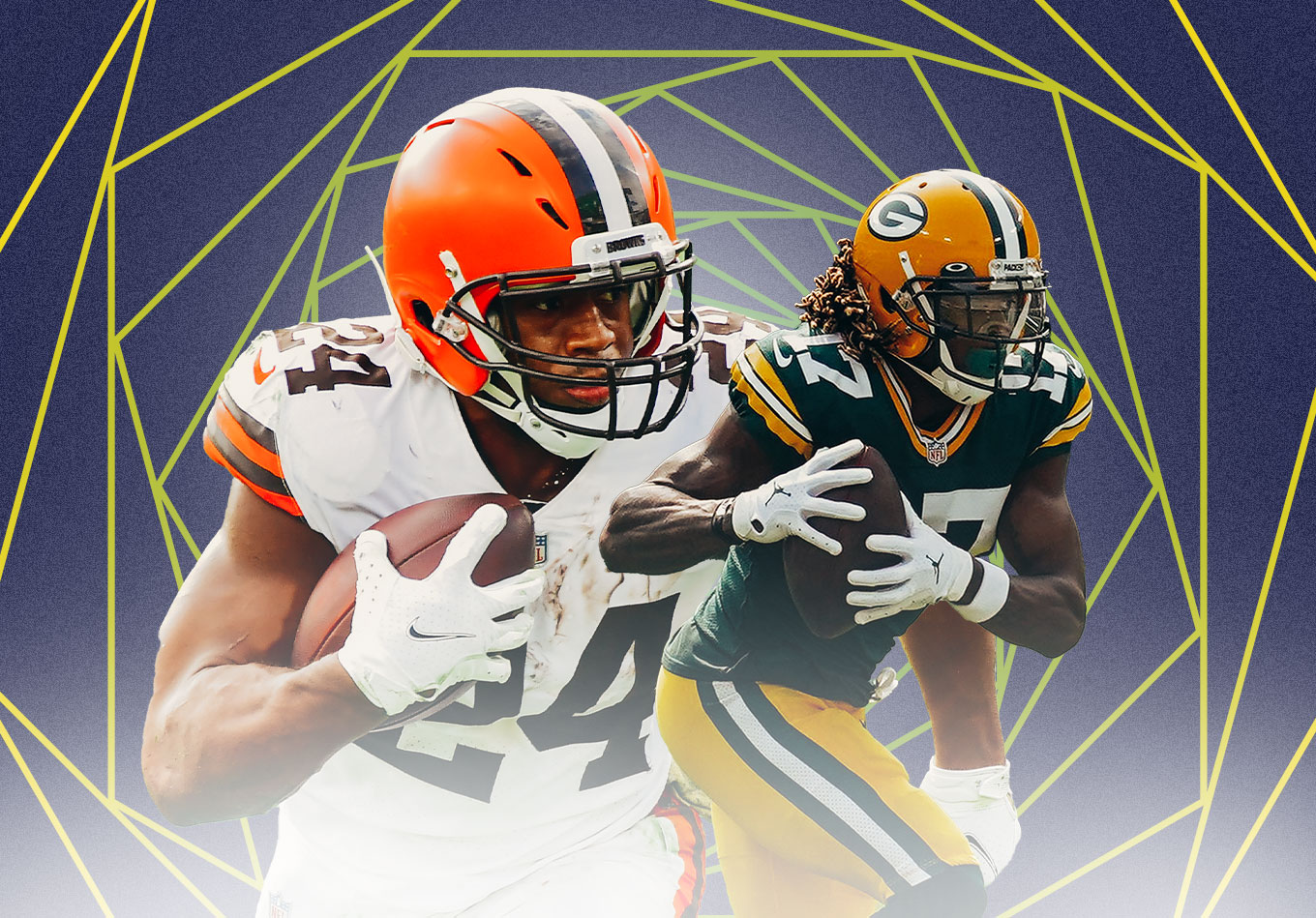The NFL provides, in the eyes of many, the ultimate test of the collective.
While there are players who can put teams on their back and elevate those around them to greatness, it is extremely difficult to end the season lifting the Lombardi Trophy without a well-rounded roster that excels in multiple areas.
And yet it is conversations over the merits of individuals that consistently inspire the most heated debates. Despite being named the league MVP last year, you would surely find ardent opposition to the claim that Aaron Rodgers is the best quarterback in the NFL.
In most cases, it is tough to make definitive statements about which players are the cream of the crop at their respective positions.
Such assessments are inherently subjective; however, it is possible to use the numbers to analyze players at a slightly more granular level and make judgments about standouts in specific facets of the game.
Here are the players worthy of our top superlatives going into a highly anticipated 2021 season:
Most Accurate QB Under Pressure: Teddy Bridgewater, Denver Broncos
Opinion of Bridgewater is divided but regardless of which side of the coin you’re on, his presence on this list probably inspired a double-take.
Officially, Philip Rivers was the most accurate quarterback under pressure last season, delivering a well-thrown ball on 78.0% of pass attempts on which he was under duress. However, Rivers has since headed off into the sunset and into the Alabama high school coaching ranks.
Next on the list, though, was Bridgewater, who in his sole season as a starter with the Carolina Panthers was accurate on 77.5% of 138 attempts under duress.

Few are excited about Bridgewater taking over as the starting quarterback in Denver, but the Broncos can afford to be confident he won’t crumble when pass rushers breach an improved offensive line led by a left tackle in Garret Bolles whose pressure allowed rate of 5.1% was the fifth best at his position last season.
Toughest to Bring Down: Nick Chubb, Cleveland Browns
Breaking into the backfield is only half the challenge against the Browns’ running game, which boasts arguably the premier tailback in the league in Chubb.
Last season, Chubb recorded the highest yards per carry average on disrupted runs (4.03) among backs with at least 100 carries and led the league at his position with a missed tackle rate per touch of 0.32.
Chubb pairs his ability to evade defenders with impressive balance that helped him average 2.59 yards after contact per rush, which put him second among backs with at least 100 carries in 2020.
Bringing down Chubb is no mean feat and defenses will need to find a way to do so more consistently in 2021 to slow down a fearsome ground attack.
Checkdown King: Deebo Samuel, San Francisco 49ers
Injuries hindered Samuel’s impact in 2020 following a superb rookie season for the 49ers wideout, but his abilities with the ball in his hands led Kyle Shanahan to turn to him when he was on the field to give an offense that regularly sputtered amid Jimmy Garopplo’s troubles staying healthy a spark.
A frequent target on screens and pop passes, Samuel’s average depth of target was just 2.3 yards, the lowest in the league. However, his burn yards per route rate of 3.0 yards was comfortably above the league average of 2.3, reflecting his talent for winning his matchups with defenders when given the chance to do so.
With Garoppolo healthy and Trey Lance sure to see the field in an intriguing quarterback situation, Samuel should enjoy more downfield targets this year. Though a missed tackle rate of 0.42 that was third among wideouts last season will ensure he continues to see plenty of touches out of the backfield.

Best Separator: Davante Adams, Green Bay Packers
Adams has earned a reputation as an elite route runner adept at creating separation from his defender with his release.
And the numbers from last year indicate there is no better receiver in the NFL at beating coverage on plays in which he’s targeted.
Indeed, Adams averaged 3.9 burn yards per route in a magnificent 2020 campaign for the Packers star, his nearest challengers a quintet of players on 3.6, illustrating why Green Bay will be so desperate to sign the 2022 free agent to a contract extension.
It’s unclear whether 2021 will be Adams’ last in a Packers uniform, but his proficiency for getting open means it is likely to be one in which he helps inspire another deep playoff run for Green Bay.
Wasted Weapon: Bryan Edwards, Las Vegas Raiders
Raiders head coach Jon Gruden was not happy with the production of first-round pick Henry Ruggs III in his rookie season, but there’s evidence to suggest Las Vegas might have made the playoffs had Gruden and Derek Carr put more faith in the third-round pick Edwards.
Edwards was targeted only 14 times across 12 games in his rookie year, but he registered a burn on 78.6% of those targets, the second-highest rate among wide receivers, while his big-play percentage of 47.1 led the league.
The former South Carolina receiver’s average depth of target of 9.8 yards was the lowest among the top 24 receivers in big-play percentage, illustrating that a player who excelled at beating his coverage was not only underused, but used incorrectly.
In Year 4 of Gruden’s second spell with the Raiders and the franchise’s first with fans allowed in Vegas, there is significant pressure for them to reach the postseason. Relying more on a 6-foot-3, 212-pound target who flashed mismatch potential in limited opportunities would be a smart step towards achieving that goal.
Top Downfield Tight End: Dan Arnold, Carolina Panthers
The conversation over the identity of the premier tight end in the NFL primarily concerns Travis Kelce and George Kittle. However, Arnold can rival them in terms of downfield impact.
Arnold’s average depth of target of 12.6 yards was the highest among tight ends last season and his big-play percentage of 39.4 was fourth at his position.

Fourth in burn yards per target (12.46), Arnold could prove hugely valuable to the Panthers if he can replicate the impact he made on deep targets in his final season with the Arizona Cardinals.
Stingiest Cornerback: Jaire Alexander, Green Bay Packers
The Packers are loaded on both sides of the ball and head into 2021 with the luxury of having arguably the top receiver and top cornerback in the NFL.
Alexander was named second-team All-Pro last year, but his performances were worthy of greater recognition.
Indeed, among cornerbacks with at least 200 coverage snaps, Alexander was the second best when it came to avoiding burns. His burn-allowed percentage of 30.6 trailed only Darious Williams (30.3).
First in burn yards per target allowed (5.22) and second in burn yards per snap (0.84), the 2018 first-round pick has blossomed into a corner whose quickness and ability to stay in phase allows him to plaster receivers from the outside and from the slot. He will be a pivotal cog for the Packers if they are to get over the hump in 2021.
Most Versatile Edge Rusher: DeMarcus Lawrence, Dallas Cowboys
Given the exploits of the likes of T.J. Watt and Joey Bosa last season, it may be bemusing to see this title given to an edge defender who has only 11.5 sacks in the past two years.
However, Lawrence’s adjusted sack tally of 12.0 for 2020 is reflective of a player who merited significantly greater reward than the 6.5 sacks he tallied as the Cowboys again missed the playoffs.
Lawrence’s pressure rate of 20.1% was comfortably above the average of 15.5% for edge defenders. He was the sole edge player with a pressure rate of at least 20.0% to also surpass that mark in terms of run disruption percentage.
Winning his matchup with a run blocker 22.7% of the time, Lawrence logged double-digit tackles for loss for the fifth time in six seasons, racking up 11. The Dallas defense has been the picture of disarray in recent times, yet little of that is Lawrence’s fault, and he should reap the benefits if the Cowboys finally get their act together on that side of the ball under new defensive coordinator Dan Quinn.
Data modeling by Greg Gifford. Design by Matt Sisneros.
